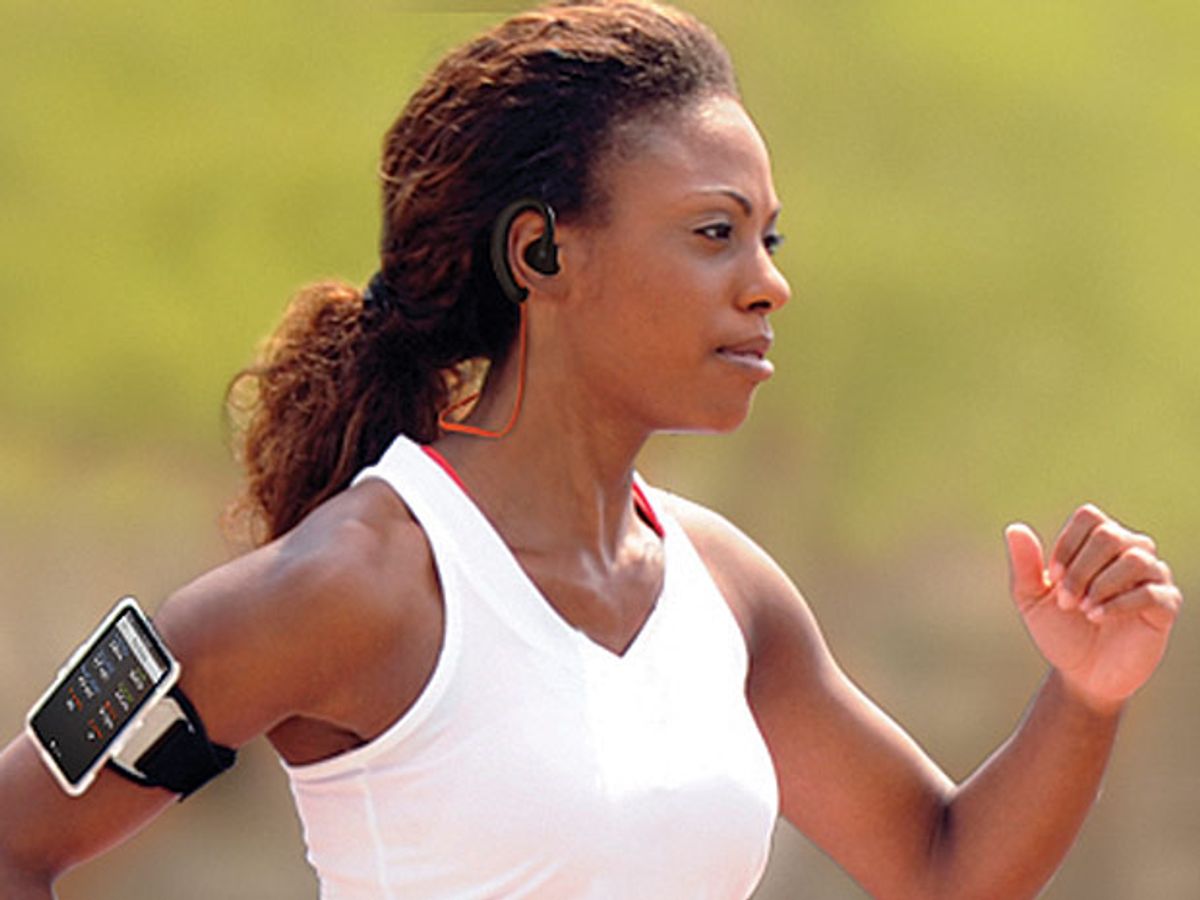Valencell measures a user’s blood flow to serve up data on heart rate, respiration, and blood oxygen levels in the midst of a workout. You’ve probably worn a device that works along similar lines on your fingertip at the doctor’s office. The problem with those is that too much motion makes it impossible for them to get a good reading.
Valencell's technology employs photoplethysmography, which measures blood flow using optical sensors. The company’s PerformTek device shines infrared light into the skin. Some of that light is reflected back to a detector, which analyzes how the reflected light arrives to provide information on how blood is flowing through nearby tissue.
Getting an accurate measurement of heart rate is difficult to do through during a workout. From the movement of your feet to the shifting of your skin, exercise creates a lot of signal noise, meaning that Valencell’s sensors work best in places that don’t get jostled much during exercise. And using light to measure blood flow also means they perform at their best in a dark place.
So the natural place to put a photoplethysmography sensor, Valencell figures, is the human ear.
The inside of the ear is more stable than other parts of the body during exercise. It also hosts a lot of capillaries, making it a good place to measure blood flow and heart rate. And it’s well placed to measure body temperature, which Valencell’s sensors don’t do right now, but could be an added feature in future iterations. What's more, it makes Valencell’s sensors right at home in what many gym users already consider a necessary piece of workout gear—a pair of headphones.
Unlike sensors that are worn on the chest or arm, headphones are already ubiquitous. Exercisers who neglect to put their monitor in a gym bag may carry on without it, but most wince at the thought of hitting the elliptical machine without a pair of headphones. “You will turn around and get your ear buds,” says Valencell president and co-founder Steven LeBouef. “That makes it easy to get people to use them.”
Gathering data from a stable space like the ear helps het a clear signal, but even the most stable body part hosts some motion artifacts during a workout. Valencell engineers use proprietary algorithms to filter out the remaining noise and separate out the blood flow data they’re looking to gather. Using these software filters, a 2011 study performed with North Carolina Wesleyan College and Campbell University found that Valencell’s sensors provided heart rate information on par with being hooked up to a electrocardiogram during exercise.
Getting a good look at an individual workout is important for making sure you’re not wasting time on the treadmill. But the real promise of the data Valencell gathers may be in tracking many of those workouts to paint a picture of fitness over time. “Long term, if you can accurately measure blood flow, heart rate, and how fast someone is moving,” says LeBouef, “you can measure health and fitness over time.”
Companies including LG and Jabra are already using sensors developed by Valencell in headphones. Intel and SMS Audio are working on a pair of health tracking earbuds using PerformTek sensors that will draw power directly from a 3.5-mm smartphone jack, eliminating the need for an external power source. It’s not just headphones, either—Scoshe has incorporated PerformTek sensors into heart rate monitors worn around the arm, suggesting that though the technology is a good fit for the ear, it can be put to use in other monitors as well.
Valencell is not looking to reinvent the headphone, though. Instead of building consumer products, they are concentrating on building sensors that gather health data, leaving development of hardware that will house it and apps that will parse it to the companies that license their products. “The goal of the company is to help people reach their health and fitness goals with data gathered by devices they already have,” LeBouef told IEEE Spectrum.



